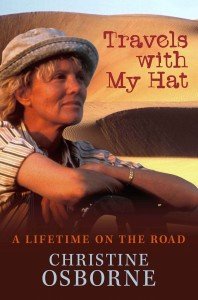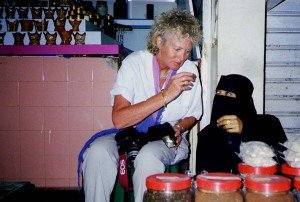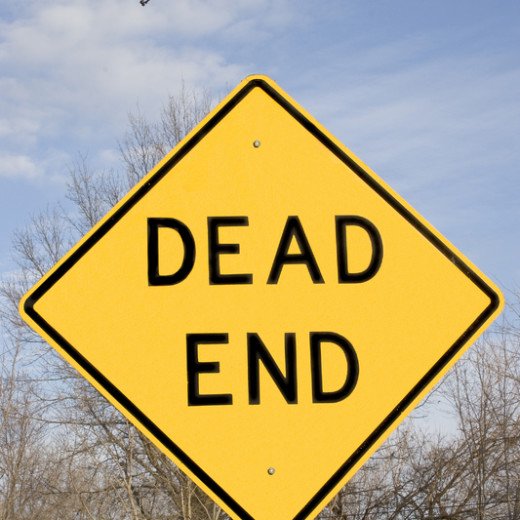Q&A with Author Christine Osborne and Her Book,Travels With My Hat
 Please welcome travel writer and photographer, Christine Osborne, share about her incredible adventures in her new book, Travels with my Hat.
Please welcome travel writer and photographer, Christine Osborne, share about her incredible adventures in her new book, Travels with my Hat.
***
Travels with My Hat is the story of how an Australian nurse switched from regimented hospital routine to become an award-winning travel writer and photographer. It is a colourful record of her experiences defined by travel and frequently against all odds.‘We don’t know who you are,’she was told on arrival in London in 1974. ‘To get a name here, you need to write a book.’ Which is what she did. Publication of The Gulf States & Oman in 1977 brought commissions on the Middle East. Books followed on Jordan and Pakistan. In 1979 she was accredited to the Buckingham Palace press corps to cover Her Majesty Queen Elizabeth’s historic tour of Arabia.The Ba’athist regime of Saddam Hussein invited her to Baghdad in 1981. Her experiences in Iraq, Ethiopia, Egypt, Yemen, Pakistan, Morocco and other exotic places, are rounded off with letters to her mother who had never left Australia.We join Christine foiling bandits in Yemen, dining with skeikhs in Dubai, and feeling the breath of death on top of the spiral minaret in Samarra, in a racy account of her adventures when only one of a thousand and one problems, was that she was a western woman freelancing her own.
***
We fired off ten questions at Christine relating to Travels with My Hat
1. Why did you quit nursing? Was it not satisfying enough?
Nursing is not exactly a happy profession. You are dealing with sick people. And I did not like the discipline. Obviously it was essential, but there was considerable bullying by some sisters. When I trained in the early 1960s, it was also a live-in situation. You lived in a tiny room and slept on a 3-piece horse-hair mattress which had to be turned every morning.
2. Why did you choose to write about the Middle East? What was the main attraction?
As a young person, I was fascinated by the poetry and stories of the East—Scheherazade and the tales of One Thousand and One Nights and the Rubaiyat of Omar Khayyam. Then by the great travel narratives such as Thesiger’s crossing of the Empty Quarter. Aged fifteen I had read Vincent Cronin’s The Last Migration—a study of the way of life of nomad tribes in southern Persia struggling to cope with development. Life seemed so exotic when compared to the dull existence in an Australian country town where my father managed a bank. We were still eating undressed salads when the Persians had been making wine for some 2,000 years.
3. What ultimately most inspired you on visiting the region?
Without question, the talented craftsmen. The exotic artifacts produced by centuries of artisans making everything from Iznik tiles to hand-woven carpets, the gleaming copperware and inlaid woodwork. I also love traditional Arab architecture. And last but by no means least I was impressed and also humbled by the hospitality of the poorest Bedouin who will offer their last date or final drop of camel milk. I spent a lot of time among the Bedu in Jordan and the Arab States of the Gulf. My first book. The Gulf States and Oman, looked at the changing lifestyle of a society transformed by vast revenues from oil and gas.
4. Where might you have lived if you had married, for example?
Having spent all my life writing about the East, I feel more at home there than in a western society. I believe it might have been in India, or Pakistan. Or possibly somewhere in Africa.
5. What was the worst aspect about being a single woman travelling in such macho countries?
Being constantly humiliated by officials in the developing Arab oil states. Loneliness although this relates less to being a woman than having “gone it” alone. There were no PR companies to pave the way, but the freedom of being a freelance meant I was my own boss and I tirelessly sort out interesting stories and photographs for the British and Arab media. I never met another doing similar on a shoe-string except for an American woman researching an encyclopedia who said “we are mad slogging our hearts out when a quickie will net us all of the riches in Aladdin’s cave.” You could spot who was sleeping with the sheikhs by her wristwatch. There were a lot of air hostesses sporting fabulous watches during the 1970s.
6. Did you constantly have to fend off men who thought you might be an easy fling?
I think that most men saw that I was dedicated to by work, though I had a couple of incidents in Dubai and Oman. Western men tend to behave stupidly when away from home.
7. Has working as a travel writer been satisfying both personally and financially?
Travel writing was hugely satisfying but it is no way to get rich. I have enjoyed financial success via my photographs, especially when I began specializing in world religions in the 1990s.
8. Were some of your experiences too personal to write about?
I have omitted the really personal things. I am a very private person and as I don’t share personal experiences, I am certainly not going to write about them in a book. While readers praise TWMH, I still ponder whether anyone can be that interested in my life although it is true, that while today everyone travels, my experiences are unique. Especially when I accompanied the Queen of England on her big tour of the Arab states.
9. How long did it take you to write Travels with My Hat?
Roughly five years because it was interrupted by a big move back to Australia after living in London for nearly 40 years. My editor asked how could I remember events which go back longer than this, but I kept copious notes from the day I set out in 1964! Mum kept all my letters. We wrote every week and the last chapter is on our correspondence. She who had never left Australia and me from somewhere like Baghdad or Khartoum.
10. Why have you self-published?
I am a published author of some fifteen travel books. While self-publishing is a costly exercise, it is very satisfying to be in control. Deciding things like the font and the paper and which photographs to use. Also, even if you have a publisher, you still have to do the marketing, so why not self-publish? Of course it took years of saving up to employ the essential top editor and the best printer. I found a good designer and have had excellent advice via Twitter.
***
Born in Sydney, Australia, Christine Osborne is an award winning journalist and photographer who has contributed to many prominent newspapers and magazines. First leaving the then cloistered shores of Australia in the 1960s, she came to prominence in 1970 when she received the Pacific Area Travel Writers’ award for articles on south-east Asia written for “Signature”, the Diners Club magazine in Melbourne.
For many decades Osborne explored the Middle East and Africa from her base in London. Following publication of The Gulf States & Oman in 1977, she fulfilled writing and photographic commissions throughout the East. Her haunting pictures of starving children taken during the devastating Ethiopian droughts of the 1970s were published in a number of European newspapers, including The Times.
One of her many assignments was interviewing Joy Adamson, the Lion Woman, in Kenya in 1973. In 1979 Osborne was the only woman photographer accredited to the Buckingham Palace press corps to cover Her Majesty Queen Elizabeth’s historic tour of the Arab States. The Queen of Jordan wrote the introduction to her second book, An Insight and Guide to Jordan.
Osborne saw many of the world’s most pristine places before the advent of mass tourism, her ground breaking work taking her to many of the world’s most beautiful and dangerous places. In 1981 she travelled to Iraq, invited to Baghdad by the Ba’athist regime of Saddam Hussein. An intrepid traveller throughout her career, Osborne has spent a lifetime on the road. She has written fifteen books and hundreds of articles, including on Pakistan, Morocco, Thailand, Malaysia, Oman and the Seychelles and Comoros islands in the Indian Ocean.
Her self published book about her unique experiences is published in Australia as a paperback.
To order via Paypal visit: www.travelswithmyhat.com. E-book will be available in February. Christine on Twitter: www.twitter.com/mudskipper







